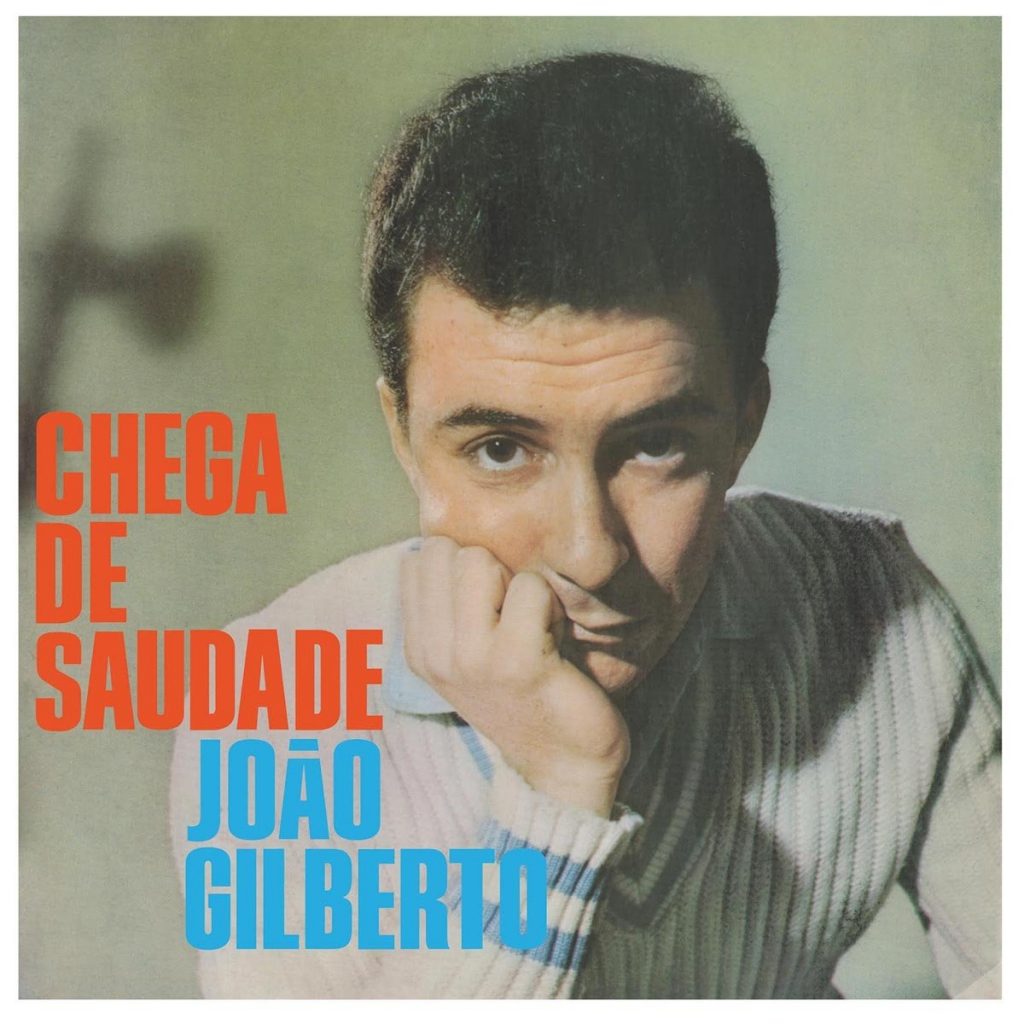Interview: Joao Teigas
We speak with the founder of This Way Up Percussion about Cajons, capoeira and his obsession with geometry

by Emily Millett
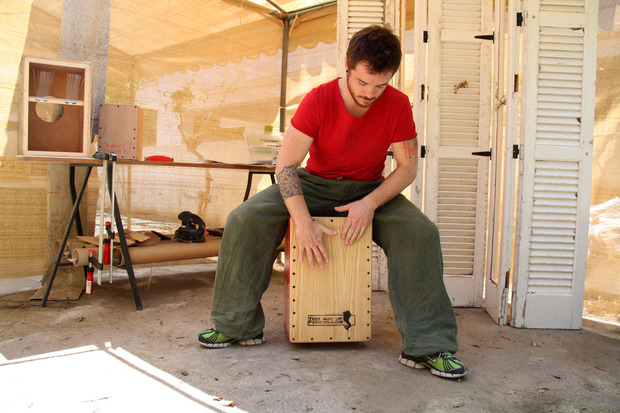
Whether he is tapping his feet in tune to the music or drumming his fingers along to an imaginary rift, Joao Teigas lives by an unstoppable musical beat, an organic rhythmic flow that seeps out of his soul and infiltrates every facet of his life. Taking every opportunity, wherever it may come from, it was only natural for the Portuguese-born architect to merge his love of music, art and capoeria in the launch of his own company, in which he designs and builds handmade, one-of-a-kind Cajon box drums. Now into its third year of operation, This Way Up Percussion is beginning to make headway on its one-man quest to revolutionize the traditional sound of capoeira—and is making some stunningly unique functional art in the process. We recently asked Teigas to tell us more about how he makes his incredible Cajons.
What exactly is a Cajon and what makes it stand out from the percussion crowd?
The Cajon is originally a Peruvian percussion box. Like all percussion instruments, it needs to be hit and it needs to have a resonance box. The unusual thing is that it is an instrument that you also sit on. According to its history—which I find poetic and interesting because it is linked to capoeira—the Cajon was introduced at the end of the 18th century and the beginning of the 19th century by slaves in order to make music and thus bring back a little bit of their national identity. Because the Cajon is a box you can sit on they could say it was just a stool allowing them to hide what they were doing because back then in the times of slavery you were not supposed to enjoy your cultural identity through music.

Can you walk us through the Cajon making process?
I divide the Cajon building process into two parts. The first is the more technical carpentry part when I actually build it. First I make the hole for the acoustics, then I glue the wooden sides together and put a frame for the snares inside, next I glue on the Tapa, which is the front part that you hit to produce the sound. Now the box is done but it still has very sharp edges so I spend hours and hours sand-papering it to make it friendly. This is the best moment of all—it goes from being rough to being super smooth. Once I’ve finished with the sanding I spend a couple of minutes just feeling the smoothness of the material. Once the Cajon is smooth, we test the sound and then I move on to the second process, which is the design process where I try to make it more than just a functional object and give it a little bit more character. Sometimes they stay in the house for months while I think, “Am I going to paint you? Am I going to varnish you?”
You come from a very creative background, how has this influenced the creative process of making the Cajon?
I am an architect by profession, but I was always very creative. Creativity has always come very naturally and organically but there was a point in my life where I decided that the best way to show what I loved about art was through architecture, because for me it’s where artistic design meets function. Art for me has to make sense and one of the things I really like about the Cajon is that beyond being a musical instrument, it is also a seat.
Growing up my mom was always encouraging me to make art. I used to do totally rubbish drawings and she always loved everything that I did. Then with my grandfather on his farm, we were always fixing things and building things. We built tree houses and fixed doors. I think that the combination of the more functional, rule-filled side from my grandfather, and the more creative encouragement from my mother influenced me a lot.
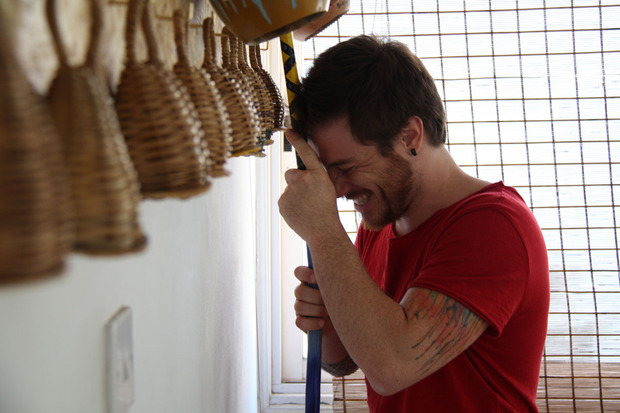
What other external elements influence or inspire you as an artist?
One thing that always made me believe that I was not only interested in art was geometry. I was always obsessed with geometry, I love it. For me it brings back that function and that rational behavior that nature has. I could never just be an engineer following reason and rules, but I could never just be an abstract artist either. In relation to This Way Up Percussion, the optical illusion Cajon was inspired by is a painting by Bridget Riley called “Movement in Squares” from 1961.
Living with a tattoo artist and a capoeira master and musician in a house which is constantly generating movement, music and art, it’s impossible not to be influenced and not to become more creative. At the moment I am exploring tribal geometry and experimenting with layers of varnish to create tone. This is a direct influence from the tattoo work that I see. We are all very good friends as well so they give me feedback, we bounce ideas back and forth, we share images it’s incredible.
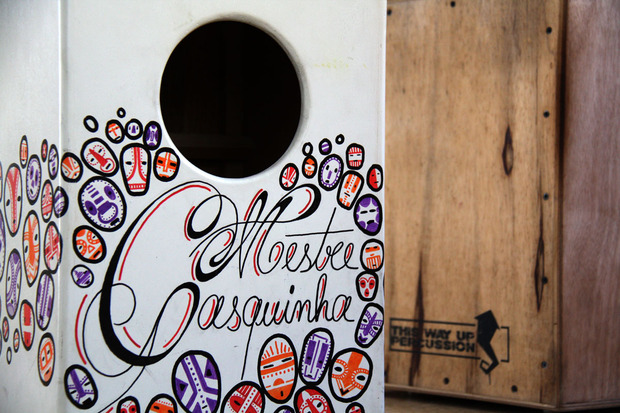
Always working outdoors, how much are you inspired by what you see in nature?
This Way Up started in the garden in my old house. I would go outside and make the Cajons and it was a very important time for me. There was very little noise in the area and it gave me the peace of mind I needed. I don’t think I would have been able to make them with so much love as I did if it wasn’t for that garden. If it was in a workshop between four walls I would always have the sensation that they were made in a more industrial way. Some of the designs actually used the vegetation of the garden itself, experimenting with stencils and flowers. Of course there are also times when the client asks me for something specific on the Cajon.
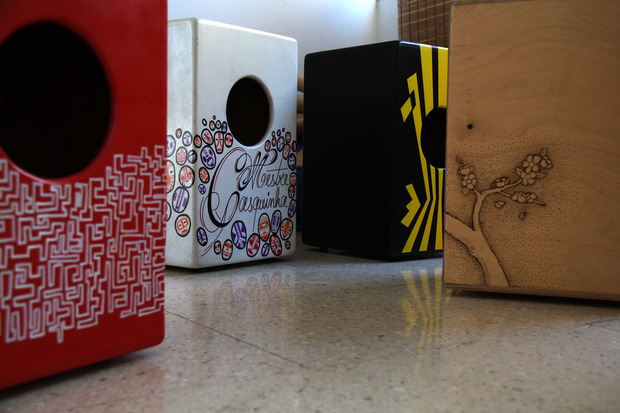
Do you have to see and feel the Cajon before you decide how to design it or do you have an idea in your head before you start?
Often the design of the Cajon is in my mind before I have made it or before I even buy the wood. I might see something and think, “Ah this would look very nice on a Cajon,” and then I go and make it. Sometimes during the technical process ideas and inspiration come from the veins of the wood itself. Sometimes a Cajon might stay un-designed for a long time after it is technically finished until I suddenly see something and think, “Wow this design would look great on a Cajon.” Often it’s not based on any logic but on me and what is going on in my life at the time. If I’m going through a hard time the design will probably come out less creative or less colorful. They might be a little bit more solid and geometric as I try to find out the reason for whatever is going wrong in my life! It becomes like therapy. I have so many thoughts that go through my mind and I deal with so many things while I am working that sometimes the drums become very personal and it is difficult to let them go!
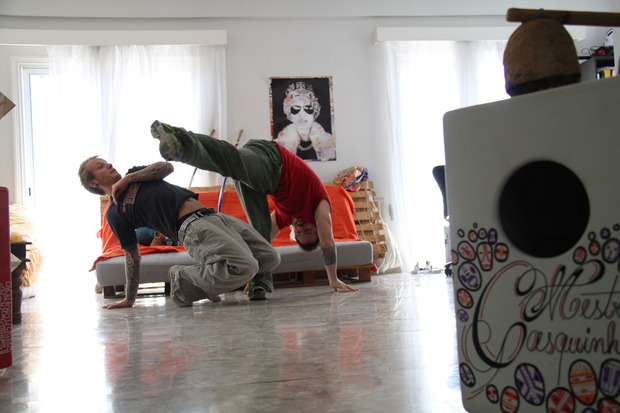
What came first, the Cajon or capoeira, and how do the two elements tie in to each other now?
Capoeira came first. This Way Up Percussion was born through capoeira, and capoeira has allowed the idea to expand. My first clients were from capoeira and this helped me to build up my audience and to build up my confidence. In 2010 around April I was introduced to capoeira by Mestre Casquinia who used a conga drum at the classes. I knew from the first moment I played it that I wanted to know more about this kind of music. I wanted to have instruments in the house that I would be able to play. So in August, which is a beautiful month to be working outside, I built my first four Cajons. The Cajon is not a traditional capoeira instrument but it brings a heartbeat to capoeira because of its simple deep base sound, and so together Casquinia and I are pioneering its introduction. We have been using it in all our classes, at workshops and official events for three years.
How far have This Way Up Percussions drums traveled the world so far?
I just let one go now to Italy. Two years ago I took my first Cajon to Portugal to a friend who had opened a bar. While I was there I met a musician who was so good at playing the Cajon that I told him ‘If you ever want one of my Cajons I will send you one wherever you are in the world.’ Time past and he moved to Angola to work and then somehow these latest designs that I’ve been creating resonated with him and he contacted me to say he wanted one. His Cajon is already on its way over to Angola. It’s incredible; I never expected that what started as a small endeavour with capoeira could have spread all the way to Africa. Let’s see how far across the world they can travel!

Do you have a favorite one?
My favorite one was one of the original four. It’s been three years and that Cajon is still waiting to be varnished and painted and designed. It’s still with me because I know I’m supposed to do something special with it. It’s still beautiful and it still has a beautiful sound but I haven’t done anything to it because I think I will never finish it. I think the day I finish that Cajon will be the day that I stop making Cajons. The inspiration will end there.
To order a custom-made Cajon, contact Teigas via This Way Up Percussion. Images courtesy of Joao Teigas.
